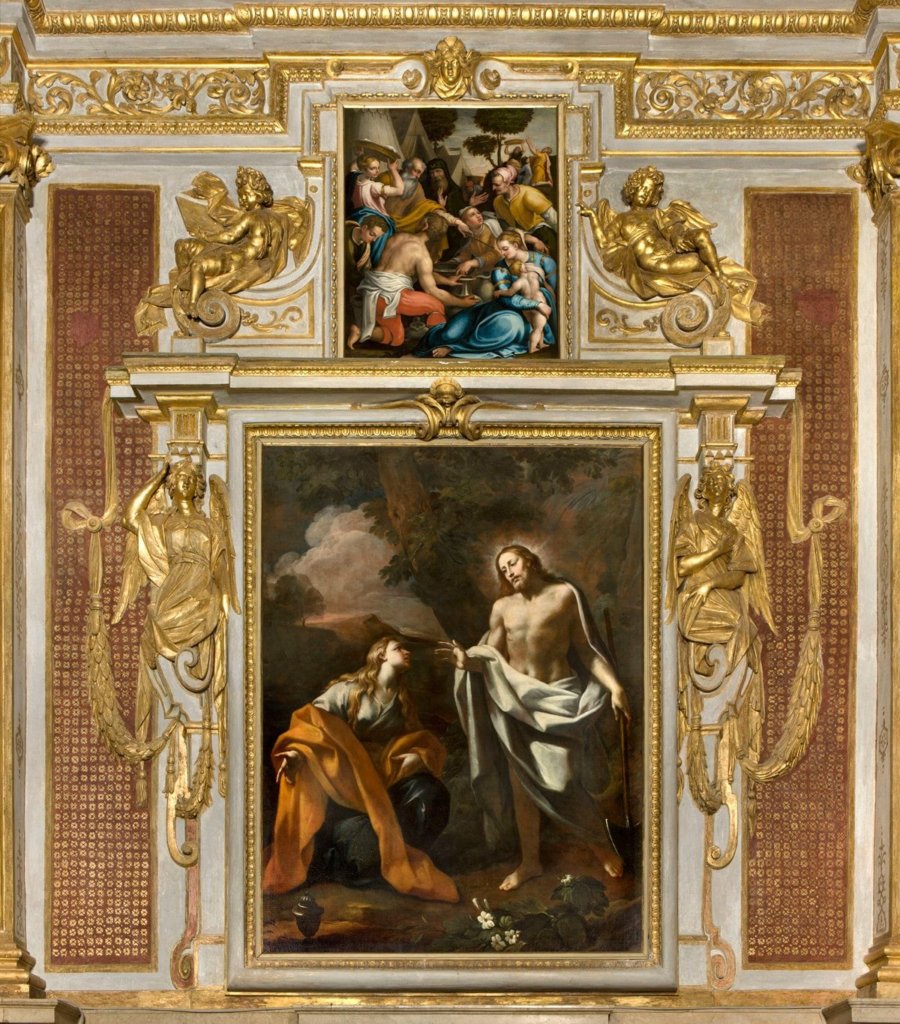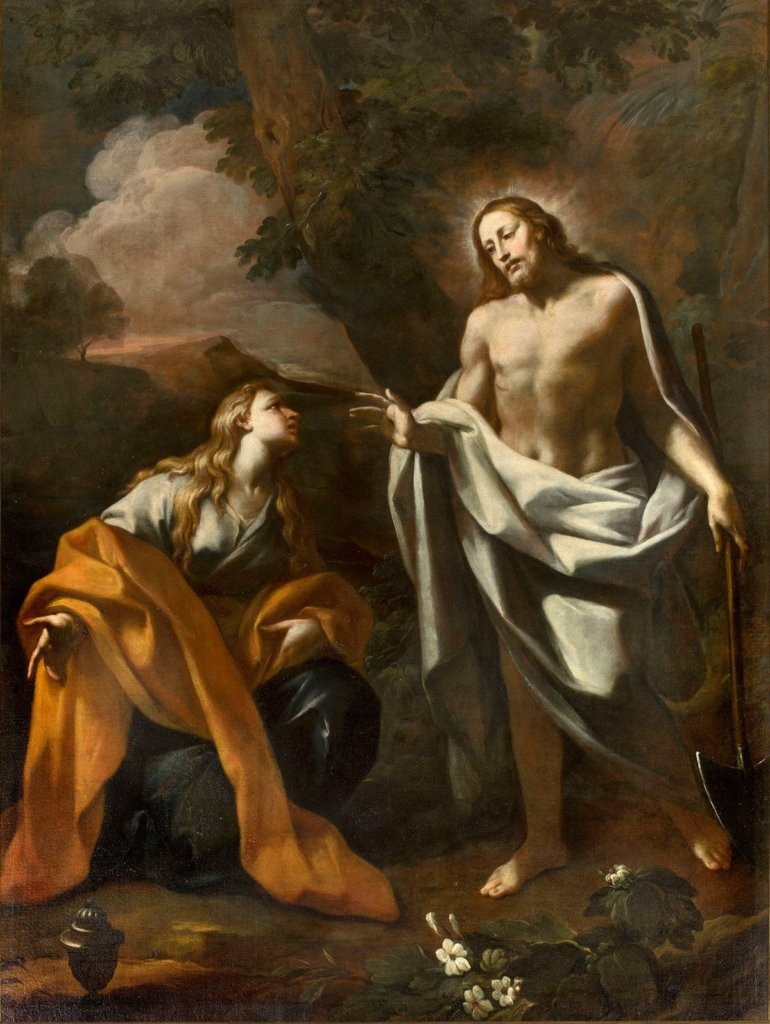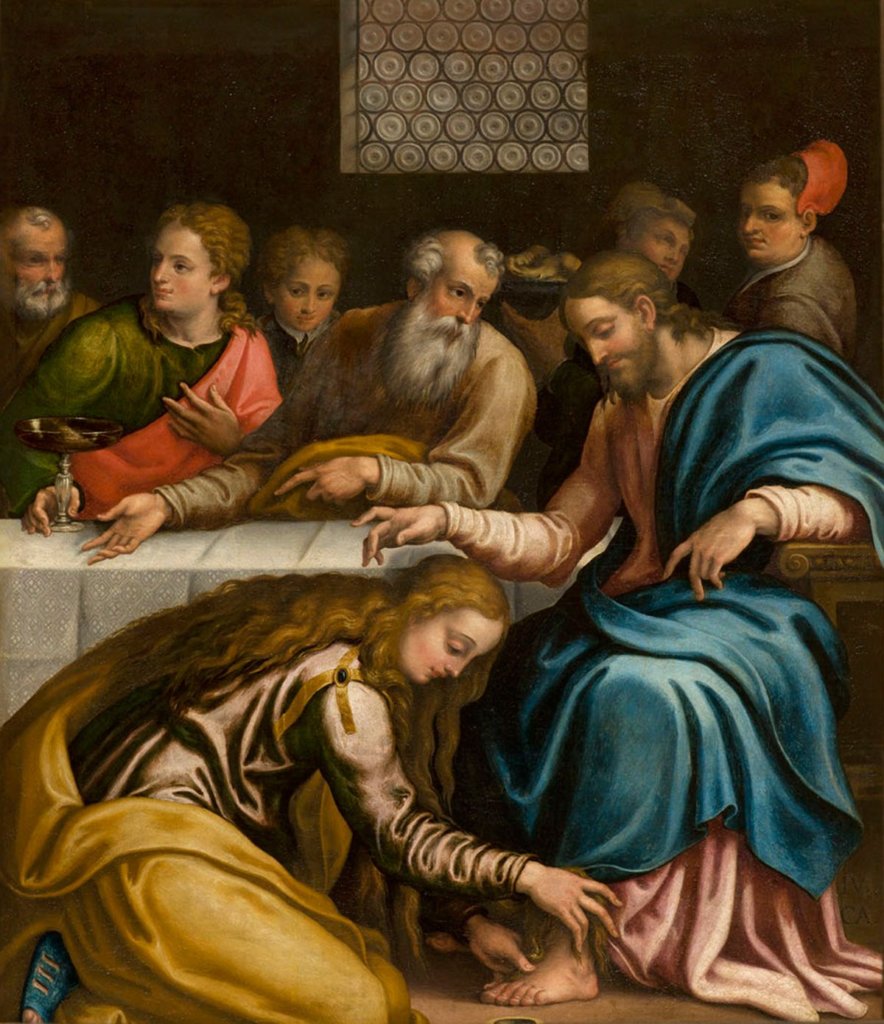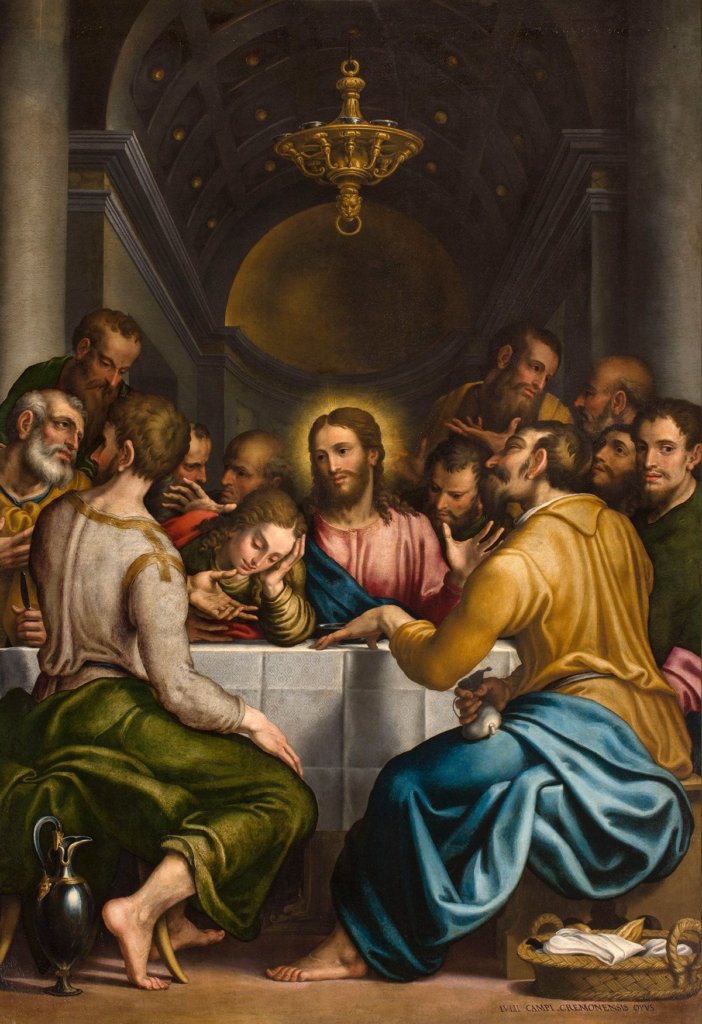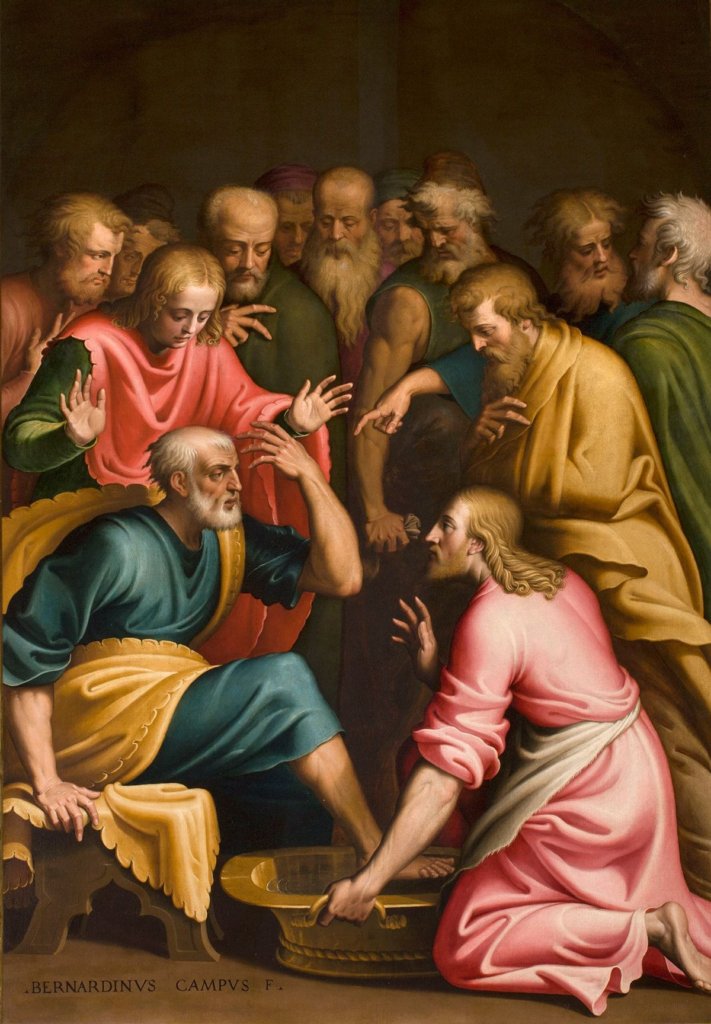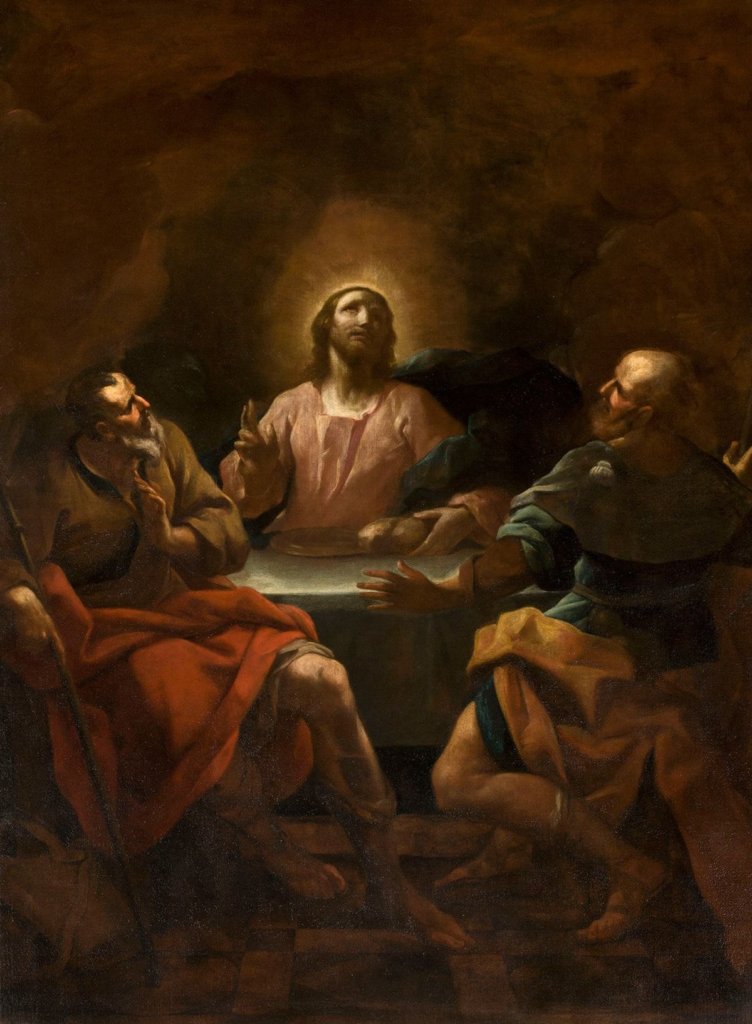Chapel of the Blessed Sacrament
Chapel - South side
From any distance one begins to turn ones gaze towards the Chapel of the Blessed Sacrament, until one enters it by passing the balustrades and finding oneself surrounded by stuccos, gold tones, enchanting paintings, some of which are of the most talented Cremonese artists, ones attention cannot fail to land immediately on the true focal point of the chapel: the small silver door of the Tabernacle.
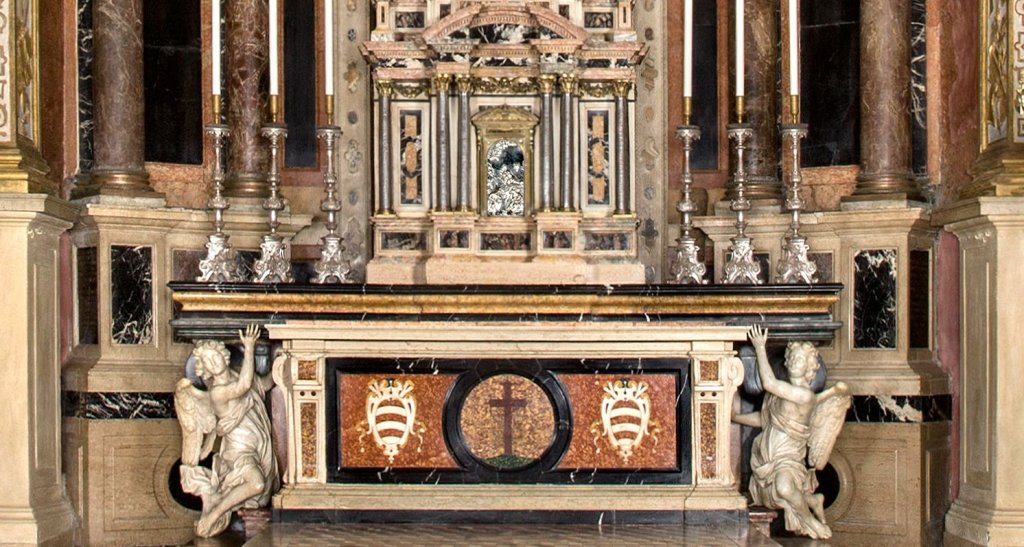
Resplendent with its sparkling light it immediately leads to the most precious treasure of the whole Cathedral: the Eucharist; real presence of Jesus Christ. Here every word must leave room for contemplation of the sacrament that brings man to an intimate communion with his Master and Lord.
“
Everything begins, one might say, from the heart of Christ who, at the Last Supper, on the eve of his passion, thanked and praised God and by so doing, with the power of his love, transformed the meaning of death which he was on his way to encounter. The fact that the Sacrament of the Altar acquired the name “Eucharist” — “thanksgiving” — expresses precisely this: that changing the substance of the bread and wine into the Body and Blood of Christ is the fruit of the gift that Christ made of himself, the gift of a Love stronger than death, divine Love which raised him from the dead. This is why the Eucharist is the food of eternal life, the Bread of Life. From Christ’s heart, from his “Eucharistic prayer” on the eve of his passion flows that dynamism which transforms reality in its cosmic, human and historical dimensions. All things proceed from God, from the omnipotence of his Triune Love, incarnate in Jesus. Christ’s heart is steeped in this Love; therefore he can thank and praise God even in the face of betrayal and violence, and in this way changes things, people and the world.
”
From the homily on the Solemnity of Corpus Christi by His Holiness Benedict XVI , June 23, 2011
In a climate that reveals real intentions for reform, the construction of the “two triumphal arches” was inserted in 1569 in the side chapels of the apse dedicated to the John the Baptist – rather the Baptism – on the left of the presbytery and on the right of the Blessed Sacrament.
Francesco Dattaro provides the project for the Baptist’s chapel and Giovanni Battista Cambi – a stucco decoration specialist – is entrusted the task of enriching the chapels with bas-reliefs and partially gilded ornaments. It is from a drawing by Giulio Campi for the altarpiece of the Blessed that we can intuit the idea of the overall appearance of the structures, conceived with the intention of creating two “twin” chapels. There are no traces of this first decorative phase except in the twelve canvases by Giulio and Bernardino Campi, who, in providing their works, try to tune their language in the search for an overall homogeneity.
We must wait until the end of the century for the renewal of the chapel of the Blessed Sacrament based on a project by Il Malosso.

The contract with Angelo Nani for the construction of the work dates back to 1597, which undoubtedly showed considerable ambition, given the involvement of various Milanese sculptors (including Antonio Daverio, Pietro Rainaldi, Camillo Cesare Procaccini) for the preparation of statues and ornaments intended for the altar. Unfortunately, these works do not find their place in the chapel due to breaches of contract and delays on the part of the artists themselves: for example, the four evangelists initially conceived in dialogue with the tabernacle arrived at the cathedral practically at the end of the work and were thus placed in the presbytery within specially made niches.
Even the construction of the altar sees a suspension due to the failure to reconfirm of Angelo Nani. Leading the new interventions since 1606 is a stone-cutter from Brescia: Vincenzo Maggi, who is entrusted with the task of completing the work started using the columns and architraves already in place. Several artists collaborate with Maggi under the direction of Giuseppe Dattaro, including Matteo Galletti, Pietro Martire Sabbioneta and architect Rinaldo Cambiaghi, and the comparison between the contract initially entered into with Angelo Nani and the subsequent structures built demonstrates a substantial convergence with the initial project by Il Malosso.
Only later, when work was resumed in 1612, was the question – which remained unanswered – of the tabernacle which became the subject of considerable discussion surrounding the aim of creating a work that really was the fulcrum of the chapel.
Examples and hypotheses arrive from Rome and Milan of some of the most modern and valuable productions but it will again be the opinion of Il Malosso to shed light on and provide a design in which he envisions a structure with two levels: a severe temple streamlined in its proportions which will engage stone-cutters, goldsmiths and bronze workers for another five years.
We remember Francesco Manara, author of the silver columns; the Veronese Servio Levi, to whom we credit with the risen Christ in bronze at the pinnacle (1616-1617); the Milanese Orazio Batalea who modelled the silver dome, Francesco Pobia, who embossed the doors in silver, and Girolamo Morone, supplier of the bases and the capitals in gilded bronze.


